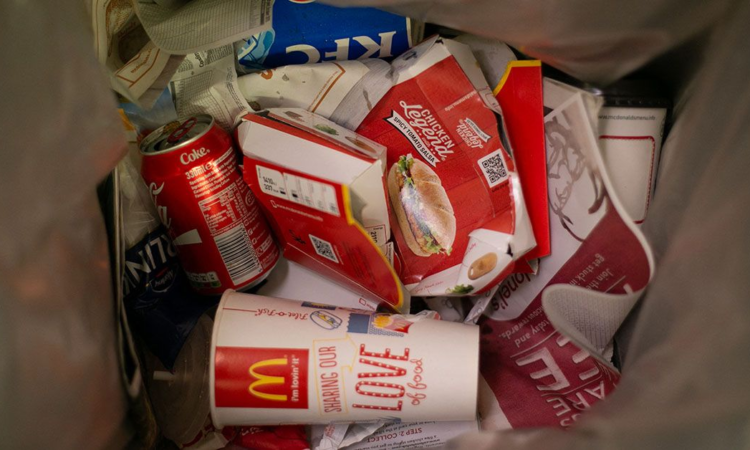
The number of people in the United States with an unhealthy diet has decreased over 20 years, but overall rates are still high and general dietary trends are a mixed bag.
That according to research from Tufts University in Massachusetts that was published today in the Annals of Internal Medicine.
Between 1999 and 2020, the number of adults reporting a poor diet — low in fruits and vegetables and whole grains and high in processed meats, saturated fat, and sodium — dropped from nearly 49% to about 36% during the study period. At the same time, people with intermediate diets increased from 50% to 61% while the number of those with an ideal diet increased slightly from 0.66% to 1.58%.
Diets were assessed as poor, intermediate, or ideal using the American Heart Association’s 2020 continuous diet score, which uses an 80-point system to assess diets based on healthy eating habits. A poor diet can increase risks of developing health conditions such obesity and diabetes as well as some forms of cancer, research suggests.
“While the study provides insights into Americans’ overall dietary habits, potential limitations should be considered when interpreting the results,” Kelsey Costa, MS, RDN, a registered dietitian nutritionist and founder of Dietitian Insights, told Medical News Today.
“Reliance on self-reported data, specifically 24-hour dietary recalls instead of more comprehensive food frequency questionnaires or a combination, may both introduce recall bias and limit its accuracy,” Costa, who was not involved in the research, said. “The study also does not differentiate cooking methods and, for many food items, the level of food processing or type of food wasn’t specific beyond the food group.”
Looking deeper at Americans’ eating habits, the devil is in the demographic details with more improvements among the well-educated, wealthier, and younger adults as well as those with private health insurance, among other factors.
For example, among those in the lowest income bracket, rates of poor diet decreased the least in the 20-year study period, from nearly 52% to 47%, compared to 50% to 43% decrease among those with middle incomes. Those with the highest incomes saw the most dramatic changes, with poor diet rates falling from 45% to 30%.
“The improvement in diet seemed to be proportional to the number of resources available to the person,” said Dr. Mir Ali, a bariatric surgeon and medical director of MemorialCare Surgical Weight Loss Center at Orange Coast Medical Center in California.
“Some barriers include education on proper diet,” Ali, who was not involved in the study, told Medical News Today. “This needs to begin at an early age and continue throughout childhood. Another barrier is making healthy food affordable as well as easily available. How we can improve access to healthy foods is difficult and may require government incentives or assistance in providing healthy food options.”
Costa agreed.
“Persistent disparities indicate systemic issues such as education gaps and limited access to healthcare and nutritious foods,” she said. “Addressing these root causes would require multi-faceted approaches, including policy changes to improve education, food security, and healthcare access for disadvantaged groups.”
Beyond the policy level, experts say there are some actions individuals can take to help improve their overall diet, even on a budget.
“One important step is to find support through free community resources or online platforms,” Costa said. “There are programs that teach individuals how to stretch their food budget and make healthier meals at home from ingredients available at small corner stores, food pantries, and local markets. By learning how to read food labels, utilize what is available, and understand the impact of certain ingredients on our health, individuals can be more deliberate about their food choices, even when options are more limited.”
Meal planning can also help you stretch your dollar further and make the most of your resources. And even making one healthier choice can pay dividends.
“Starting by replacing one meal with a healthier alternative would be a start,” Ali said. “Also, finding healthier alternatives to high-calorie snacks may be another place to start.”
Share this article
OUR BRANDS







